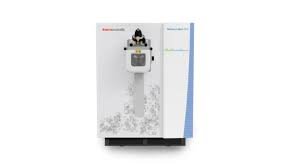Wednesday, 12 November 2025
Inside Bayer’s battle against tomato brown rugose virus
Javier Quintero, Global Lead for Tomato R&D at Bayer’s Crop Science division As the global tomato industry faces the challenge of the highly infectious Tomato brown rugose fruit virus (ToBRFV),…

Javier Quintero, Global Lead for Tomato R&D at Bayer’s Crop Science division
As the global tomato industry faces the challenge of the highly infectious Tomato brown rugose fruit virus (ToBRFV), Bayer is leading the charge in developing innovative, long-term solutions to protect crops and ensure profitability for growers. In an exclusive interview, Javier Quintero, Global Lead for Tomato R&D at Bayer’s Crop Science division, shares insights into the company’s groundbreaking work on multi-stacked resistance, an advanced strategy designed to outsmart the virus’s rapid mutation rate.
Quintero discusses the limitations of first-generation resistant varieties and explains the science behind gene stacking. He also provides details on the results from recent high-pressure virus trials, showcasing how Bayer’s latest hybrids combine durable disease resistance with superior fruit quality and yield. Furthermore, he highlights how these innovations are specifically tailored for high-tech glasshouse markets and hints at future applications of the resistance-stacking strategy in other major crops.
With new product launches expected in 2025 and strong interest from growers worldwide, Bayer’s advancements represent significant progress in sustainable tomato production and potentially beyond.
Could you share what motivated Bayer’s focus on developing multi-stacked resistance in tomato varieties? Additionally, could you explain how this approach differs from the first generation of ToBRFV-resistant tomatoes?
This is a very high-impact virus, and we did intensive research on plant-virus interactions. The first generation of tomato brown rugose fruit virus (ToBRFV) resistant varieties has been useful for immediate solutions to an urgent problem. However, internal and external studies indicated that the virus is actively mutating, and we anticipated the virus to overcome single-gene resistance. For these reasons, several years ago, we initiated a horizontal resistance breeding strategy where bringing several genes together provides a good level of resistance that is expected to hold up and be more durable against mutations in the virus. We now have commercial products available with multiple resistant genes, good agronomics, and very nice consumer quality.
Furthermore, could you elaborate on the mechanisms by which these multi-stacked resistance genes work to disrupt different stages of the plant-virus interaction?
Viruses use host plant replication mechanisms for their multiplication. We have investigated the host-virus interactions in our multiple resistant varieties, and we have found that virus multiplication is significantly slowed down in the new varieties as compared to susceptible varieties. We hypothesise that the resistant genes interfere with different steps in the replication process of the virus, and the trials have supported this hypothesis.
We are also interested in learning more about the key findings from the recent high-pressure virus trials and how these findings validate the durability of these new hybrids.
We evaluated the resistance level of selected candidate varieties in standard inoculated trials in heated glasshouse conditions. In those trials, we inoculated with a ToBRFV suspension 40 days after sowing. We confirmed infection after two weeks, and from 25 to 140 days after inoculation, we evaluated symptoms in leaves and fruits according to a standardised rating scale. These trials were conducted in quarantined facilities where we can test approximately 1,000 varieties per year.
We also tested the performance of four new varieties against the resistance-breaking ToBRFV strain. We inoculated 15 days after sowing:
- One trial was inoculated with the standard ToBRFV isolate (St-ToBRFV)
- The other was inoculated with the resistance-breaking mutant (RB-ToBRFV)
- Trials were kept in separate glasshouse compartments
Virus symptoms were evaluated at 14 and 21 days after inoculation using the scale from Gonzáles-Concha (2023), where 1 = no visible symptoms and 9 = severe symptoms
The susceptible check (left bar on each plot of Figure 1) showed ToBRFV symptoms in both trials, confirming successful inoculation. Symptoms from St-ToBRFV were more severe than those from RB-ToBRFV (score 9 vs. 5), aligning with observations reported by Zisi et al. (2024).
The four Vegetable by Bayer varieties, however, scored between 1 and 3 in both trials. These results indicate strong and consistent resistance to both the original and the mutated virus strains.

Figure 1: Each variety is represented by 20 data points in each trial. We tested the statistical significance of the symptom difference between each variety within each evaluation date with a Tukey test: Varieties sharing the same letter cannot be differentiated in terms of symptom severity, while varieties under different letters display distinct symptom severity levels. All Bayer varieties were significantly more resistant than the susceptible check in the St-ToBRFV trial as well as the RB-ToBRFV trial at 14- and 21-day post-inoculation.
Literature cited:
Zisi Z, Ghijselings L, Vogel E, Vos C and Matthijnssens J (2024). Single amino acid change in tomato brown rugose fruit virus breaks virus-specific resistance in a new resistant tomato cultivar. Front. Plant Sci. 15:1382862. doi: 10.3389/fpls.. 2024.1382862
González-Concha, L.F., Ramírez-Gil, J.G., Mora-Romero, G.A., García-Estrada, R.S., Carrillo-Fasio, J.A., Tovar-Pedraza, J.M. (2023). Development of a scale for assessment of disease severity and impact of tomato brown rugose fruit virus on tomato yield. Eur. J. Plant Pathology, 165, 579-592.
Could you provide some details on how these new hybrids perform in terms of yield, fruit quality, and shelf life when compared to traditional or earlier resistant varieties?
What’s impressive is that Bayer products are behaving on par or even better than generations launched before ToBRFV resistance came in. This applies to products we converted as well as new hybrids, exhibiting durable ToBRFV resistance combined with excellent agronomic features. In other words, no drags are observed linked to ToBRFV resistance within Bayer’s new launches. We were even able to deliver products with extra specifications and measures of performance that we did not have before. For example, extra resistance to the fungal plant pathogen Passalora fulva is exceptional! This is the type of innovation and benefits that growers appreciate and have been encouraging Bayer to continue developing.
With the anticipated launch in 2025, which regions or grower segments are likely to experience the most immediate benefits from these new varieties?
Most of the new launches are well adapted to high-tech glasshouse growers worldwide. We are currently launching products in major glasshouse market segments (Large Truss, Medium Truss, Beef, Cherries) and are deploying product launches as fast as possible to each market in need of these newly developed solutions. The main challenge we are facing is to supply the high demand for seeds of these new launches, as we need to comply with local regulations. Similarly, we are expecting significant progress in our mid-tech greenhouse program, so stay tuned as additional launches may come soon. We encourage your grower audience to reach out to their local Bayer representatives for the latest information.
Finally, looking to the future, does Bayer have plans to apply similar resistance-stacking strategies to other crops that are currently facing threats from fast-mutating viruses?
Fast-mutating viruses are a concern across a number of crops, so we’ve established a multi-stack strategy to get and stay ahead of mutation. In tomato, we’ve already successfully deployed this strategy against TYLCV and TSWV, in addition to ToBRFV, and it’s in development across other Solanum crops like peppers and in our cucurbit crops like cucumber, melon and watermelon, to name a few.
Shraddha Warde
shraddha.warde@mmactiv.com
Technology
MENU ORDER AI to launch app aimed at GLP-1 users and health-conscious diners
Nov 10, 2025 | Company News
Harnessing Quantum AI for Greener Minds and Healthier Futures
Nov 10, 2025 | Interaction
Intertek acquires Costa Rican testing business Suplilab
Nov 07, 2025 | Company News
Food Testing
Intertek acquires Costa Rican testing business Suplilab
Nov 07, 2025 | Company News
Thermo Fisher Scientific launches Orbitrap mass detector for food safety testing
Oct 24, 2025 | Company News
ADM advances quality capabilities with opening of new Central Milling Laboratory
Oct 16, 2025 | Company News
More Popular
HEINEKEN opens new brewery in Brazil
Nov 12, 2025 | Beverages
Remilk and Gad Dairies introduce The New Milk in Israel
Nov 12, 2025 | Beverages
Ochre Spirits closes seed round led by Ah! Ventures to build next-gen beverage house
Nov 12, 2025 | Beverages





